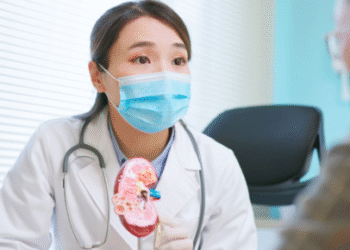Retinal diseases can seem mysterious, like a puzzle waiting to be solved. These conditions, affecting the light-sensitive tissue at the back of the eye, can impact vision in many ways. From the well-known glaucoma bay ridge to lesser-known disorders, understanding these diseases is crucial. Early detection and treatment can preserve sight and improve quality of life. In this blog, I’ll demystify retinal diseases, offering insights into their causes, symptoms, and treatments. Let’s uncover the secrets of the retina together.
Understanding the Retina
The retina is like a camera sensor. It captures light and sends signals to the brain, forming images. When the retina faces issues, vision can blur or disappear. Common problems include macular degeneration, diabetic retinopathy, and retinal detachment.
Common Retinal Diseases
Let’s explore some common retinal diseases:
- Macular Degeneration: This condition affects central vision. The macula, part of the retina, deteriorates over time. It mostly affects older adults.
- Diabetic Retinopathy: Diabetes can damage blood vessels in the retina. It can lead to vision loss if untreated.
- Retinal Detachment: This occurs when the retina pulls away from its normal position. It is an emergency requiring immediate attention.
Comparing Retinal Conditions
Each retinal condition has unique characteristics. Here’s a simple comparison:
| Condition | Affected Area | Main Symptom |
| Macular Degeneration | Macula | Central vision loss |
| Diabetic Retinopathy | Retinal blood vessels | Blurred vision |
| Retinal Detachment | Entire retina | Sudden vision changes |
Causes and Risk Factors
Retinal diseases stem from various causes:
- Age: Aging impacts the retina’s health.
- Diabetes: High blood sugar can harm retinal vessels.
- Genetics: Family history plays a role in many retinal conditions.
- Lifestyle: Smoking and poor diet can increase risks.
Symptoms to Watch For
Retinal diseases often start subtly. Key symptoms include:
- Blurred or distorted vision
- Dark spots or floaters
- Loss of peripheral vision
- Difficulty seeing at night
Importance of Early Detection
Early detection can save vision. Regular eye exams help catch problems before they worsen. According to the National Eye Institute, comprehensive exams are vital, especially for those with risk factors.
Treatment Options
Treatments vary by condition:
- Medications: Drugs can slow progression, especially in macular degeneration.
- Laser Therapy: This can treat abnormal blood vessels in diabetic retinopathy.
- Surgery: Retinal detachment often requires surgical intervention.
Living with Retinal Diseases
Managing retinal diseases requires lifestyle adjustments. Eating a balanced diet rich in leafy greens and fish supports eye health. Quitting smoking and managing blood sugar also help.
Conclusion
Retinal diseases may seem daunting, but understanding them helps. Early action and treatment can protect vision. Armed with knowledge and the right care, living with retinal conditions becomes manageable. Regular check-ups and a healthy lifestyle pave the way for better eye health. Remember, the eyes are a window to overall health, so take care of them wisely.
















